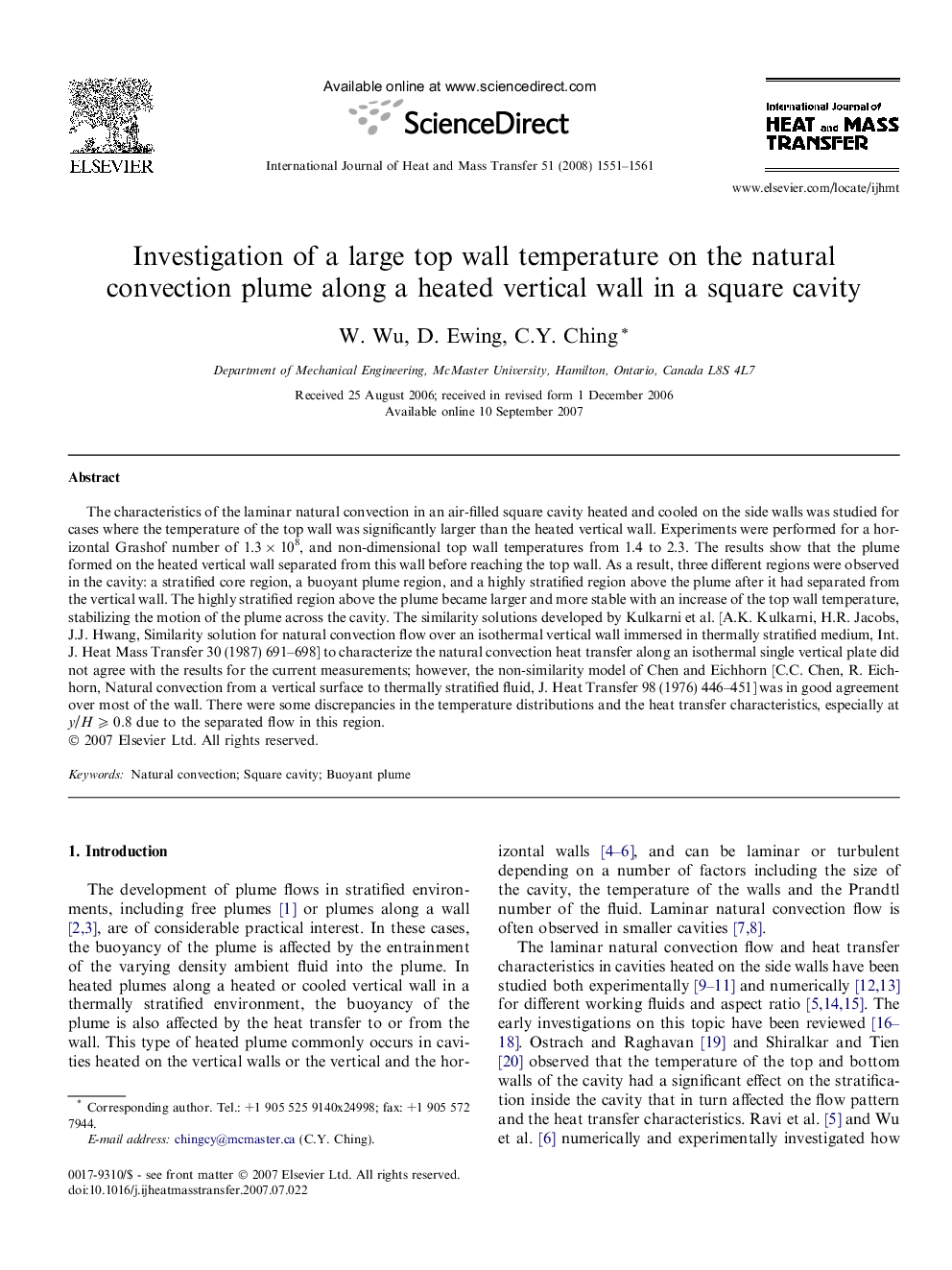| Article ID | Journal | Published Year | Pages | File Type |
|---|---|---|---|---|
| 661153 | International Journal of Heat and Mass Transfer | 2008 | 11 Pages |
The characteristics of the laminar natural convection in an air-filled square cavity heated and cooled on the side walls was studied for cases where the temperature of the top wall was significantly larger than the heated vertical wall. Experiments were performed for a horizontal Grashof number of 1.3 × 108, and non-dimensional top wall temperatures from 1.4 to 2.3. The results show that the plume formed on the heated vertical wall separated from this wall before reaching the top wall. As a result, three different regions were observed in the cavity: a stratified core region, a buoyant plume region, and a highly stratified region above the plume after it had separated from the vertical wall. The highly stratified region above the plume became larger and more stable with an increase of the top wall temperature, stabilizing the motion of the plume across the cavity. The similarity solutions developed by Kulkarni et al. [A.K. Kulkarni, H.R. Jacobs, J.J. Hwang, Similarity solution for natural convection flow over an isothermal vertical wall immersed in thermally stratified medium, Int. J. Heat Mass Transfer 30 (1987) 691–698] to characterize the natural convection heat transfer along an isothermal single vertical plate did not agree with the results for the current measurements; however, the non-similarity model of Chen and Eichhorn [C.C. Chen, R. Eichhorn, Natural convection from a vertical surface to thermally stratified fluid, J. Heat Transfer 98 (1976) 446–451] was in good agreement over most of the wall. There were some discrepancies in the temperature distributions and the heat transfer characteristics, especially at y/H ⩾ 0.8 due to the separated flow in this region.
